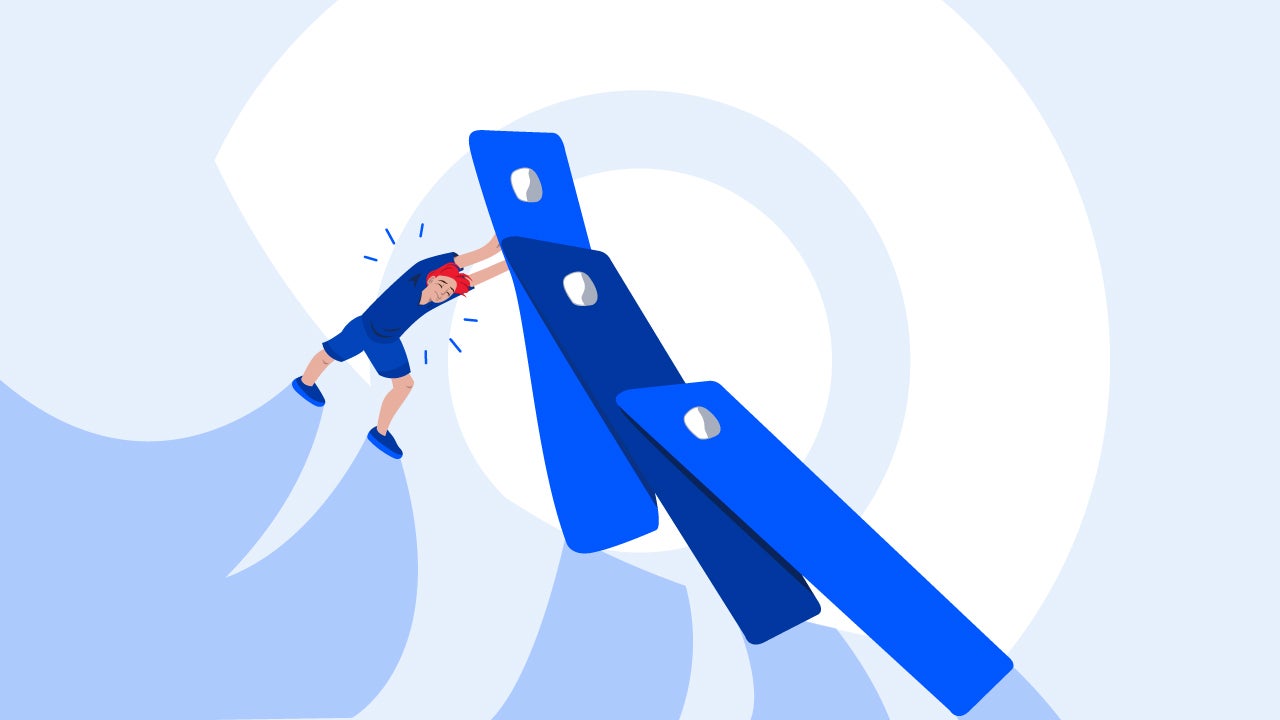What is a credit card hardship program?

Key takeaways
- A credit card hardship program may help you catch up on payments without defaulting on your credit cards.
- Many credit card issuers offer credit card hardship programs to borrowers experiencing financial hardship, even if the issuers don’t actively promote these programs.
- Being up front about your situation and exploring hardship program options can help you regain control and avoid more serious financial consequences.
- There are alternative options to credit card hardship programs, including balance transfer cards, debt consolidation loans, credit counseling and debt settlement.
Life doesn’t always go as planned, and when financial hardships hit — whether it’s a job loss, unexpected medical bills or divorce — managing your credit card payments can become a real challenge. Missing payments or falling behind can lead to mounting fees, higher interest rates and a damaged credit score. The good news? Many credit card companies offer hardship programs to give you temporary relief and help you stay on track during tough times.
A credit card hardship program can reduce financial stress by lowering monthly payments, cutting interest rates or pausing fees for a set period. But like any financial solution, these programs come with their own set of pros and cons. Let’s break down how credit card hardship programs work, when they’re a good idea, and how to navigate the process so you can make the best decision for your situation.
How do credit card hardship programs work?
When you enroll in a hardship program, you’ll typically need to call your lender, explain your situation and request to be enrolled. They might ask for some proof, such as a letter from your employer or medical records, to verify your hardship. Once approved, they’ll outline the terms of the program — what they’re offering and how long it’ll last.
While in a hardship program, your lender might reduce your monthly payments, lower your interest rate or even waive certain fees for a set period — usually a few months to a year. The idea is to help you get back on track without damaging your credit too much or sending you deeper into debt.
Keep in mind, though, that being in a hardship program might come with some trade-offs. For example, your account could be frozen while in the program, and your participation might show up on your credit report. However, benefits like avoiding late fees, staying current on payments and controlling your debt often outweigh these drawbacks.
Who qualifies for hardship loans?
Anyone unable to pay their credit card bills due to hardship may qualify for a credit card hardship program.
These programs are designed to help people facing hardships such as job loss, medical emergency, suffering a serious and costly illness or injury, a divorce, a family emergency or a natural disaster.
“The requirements for qualifying for a credit card hardship program will vary from issuer to issuer,” says personal finance expert Andrew Lokenauth of TheFinanceNewsletter.com. “Some common eligibility requirements include being current on your payments for at least six months, having a good credit history, and being able to prove you are experiencing financial hardship.”
Most lenders and banks will require documented proof of your hardship, such as a job termination letter, medical bills or financial statements.
“Many institutions also require that the consumer meet with a credit counselor or complete a debt management program to qualify,” says Laura Sterling, vice president of marketing for Georgia’s Own Credit Union.
How to apply for credit card hardship programs
To enroll in a credit card hardship program, simply contact your credit card issuer and ask if they offer one. Many major issuers such as Chase, Citibank and American Express offer hardship programs.
Just be aware that you’ll have to initiate the conversation.
“Credit card issuers do not advertise credit card hardship programs, even if they do provide them. So if you have a hardship, it’s best to reach out to your issuer directly to see what assistance they offer,” says Sterling.
Once you’ve reached out to your lender, prepare to take the following steps.
1. Document your hardship
Submit documentation that proves your financial hardship. For example, if you have lost your job, you may need to provide your termination letter. If you have experienced an illness or accident, you could provide your medical bills or pay stubs showing a reduced work schedule.
2. Negotiate terms
You need to discuss the options, including reduced interest rates, waived fees, lower payments or temporary pause on payments. You may be required to sign a program contract to enroll.
Make sure you fully understand the terms. Ask questions like: How long does the program last? Will my account be frozen? How will this affect my credit score? And, most importantly, what happens after the program ends? Knowing the details up front helps you avoid surprises and decide if the program works for you.
3. Complete the program
If you agree to the hardship program, it’s crucial to stick to the terms.
Make the reduced payments on time and stay within the guidelines set by your lender. Use this period to stabilize your finances — whether it’s cutting unnecessary expenses, finding extra income or creating a long-term budget. When the program ends, you’ll be better positioned to handle your debt and stay on top of payments.
What are the pros and cons of a hardship program?
While hardship programs can offer much-needed breathing room, they’re not a one-size-fits-all solution. Here’s a closer look at the pros and cons of hardship programs to help you decide if they’re the right step for your financial journey.
Pros of a hardship program
- Possibility to avoid serious consequences. Enrolling in a hardship program shows your lender that you’re serious about staying on track, which can help you avoid collections or more severe consequences like default. For many people, it’s a way to regain control without completely wrecking their credit or financial stability.
- Relief if you’re feeling overwhelmed. A hardship program can be a real game changer when you’re feeling overwhelmed by your financial situation. The extra breathing room can help your mental and physical health while you get back on track.
- Temporarily lowered or paused payments. “You may be allowed to pause or lower your payments. Your interest rate may be temporarily reduced, and you’ll likely be allowed to make lower monthly payments without being charged late fees,” says Lokenauth. This means you can focus on paying off your debt without worrying about falling further behind.
Cons of a hardship program
- Automatic payments may be required. You may be obligated to set up automatic payments from your bank account to ensure payments are made.
- Continued interest payments. Even if payments are paused, card issuers can continue charging interest during your program participation. This would cause your balance to rise while payments are paused.
- Frozen account Your account might be frozen while you’re enrolled, meaning you won’t be able to make new purchases or access your credit line.
- Increased total interest due. The plan may extend your borrowing terms and increase the total interest you pay over the course of the loan.
- Only offers temporary relief. If your financial situation doesn’t improve by the time the program ends, you could find yourself back in a tight spot. It’s also important to know that not all lenders offer the same level of flexibility, so the terms might not fully meet your needs.
- Potential credit impact: Generally, a hardship program won’t affect your credit. However, it could affect your credit if a creditor decides to close your account or lower your available credit.
Alternatives to hardship programs
Entering into a credit card hardship program isn’t your only option. The best choice for eliminating debt is to consider your income, amount owed and long-term financial goals. Here are a few alternative options to consider for paying down debt:
- Apply for a balance transfer credit card: This card could help you pay off your debt by transferring your existing balances to a new credit card with a 0 percent introductory APR. This intro rate typically lasts between 12 and 24 months.
- Look into hardship loans: Hardship loans may offer lower interest rates for those who need money while recovering from financial hardship.
- Debt consolidation loans: These loans allow you to borrow a lump sum to pay off multiple existing debts. The key is to find a new loan with lower interest rates than your current ones. This is a good option for borrowers with good to excellent credit scores.
- Credit counseling: A certified credit counselor can help you create a personalized budget and explore debt management options. Credit counseling is available through for-profit companies and nonprofit organizations, including credit repair companies.
- Debt settlement: With this option, you or a debt settlement company will negotiate with creditors to pay off your debt for less than you owe. This may save you money, but proceed with caution — debt settlement will harm your credit score.
- Consider bankruptcy as a last resort: Filing bankruptcy significantly impacts your credit score for seven to 10 years, so this is not a decision to take lightly. However, bankruptcy can provide a way to get out of overwhelming debt so you can move forward financially.
The bottom line
Mounting credit card debt can leave you feeling overwhelmed and anxious, particularly when facing financial hardship. However, a credit hardship program can be a valuable tool when life throws financial curveballs your way. It offers temporary relief by lowering payments, reducing interest rates or waiving fees, offering a chance to regain control of your finances without falling deeper into debt. However, it’s important to weigh the pros and cons, understand the terms and use the opportunity to build a stronger financial foundation. If you’re facing hardship, don’t hesitate to contact your lender — taking action early can make all the difference.
“Just be sure to do your research and explore all your available options before you enter into a credit card hardship program,” Lokenauth says. “Also, read the fine print carefully and make sure you understand all the terms before signing or committing to anything.”






